#snake goddess
Text
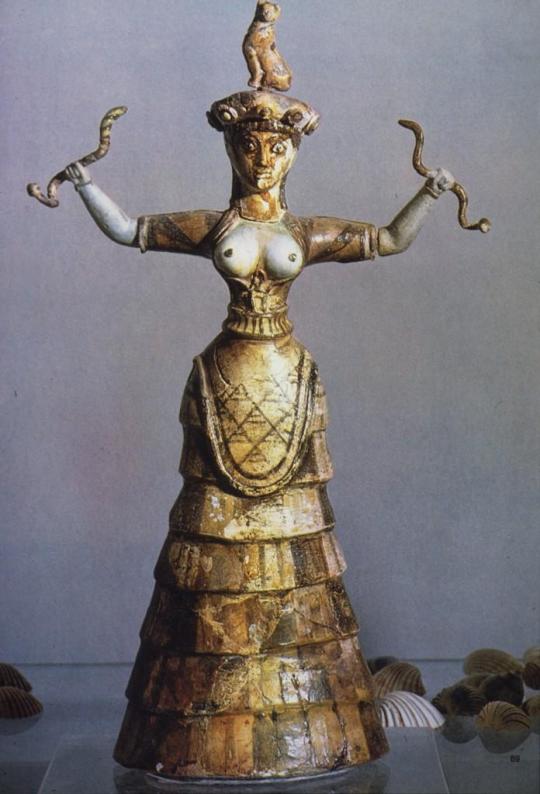
Unknown, (Crete, Minoan)
Snake Goddess, figurine from palace complex at Knossos
ca. 1600-1550 B.C.E.
Archeological Museum, Herakleion, Crete
206 notes
·
View notes
Text
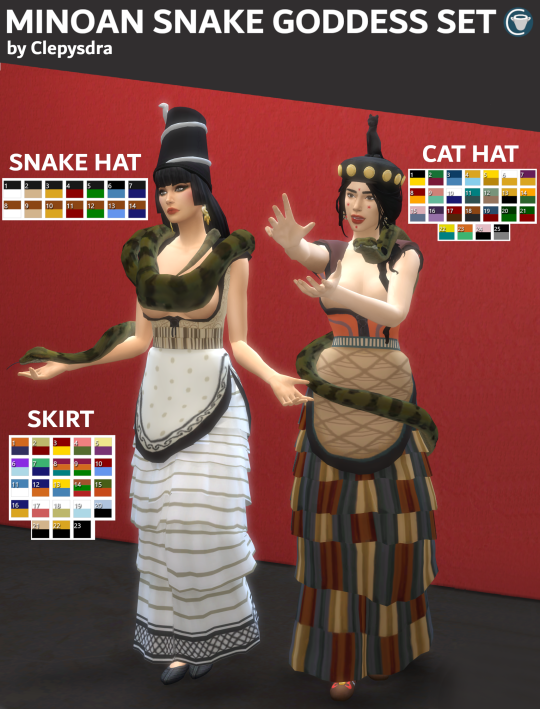
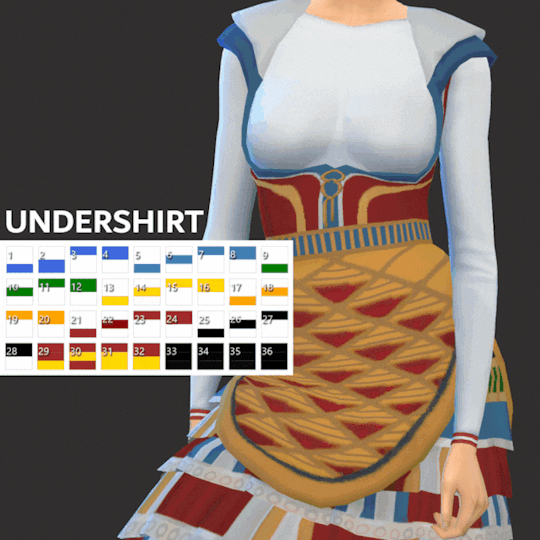
Minoan Snake Goddess Set
The outfit is an edit of @teanmoon's gorgeous Minoan Maiden Dress. Thanks to Inga's generous TOU, the mesh is not required, but it is recommended! I removed the bust covering, added an apron, and converted the dress to the bottoms (skirt) category, so your sim can remain topless with the outfit applied.
Minoan Snake Goddess Dress (BOTTOM)
Bottom category (skirt)
Base game compatible
23 swatches
Disallowed for random
Feminine
Minoan Undershirt (TOP)
Top category
Base game compatible
36 swatches
Disallowed for random
Feminine
Minoan Snake Hat
Hat category
Base game compatible
14 swatches
Disallowed for random
Minoan Cat Hat
Hat category
Base game compatible
25 swatches
Disallowed for random
BOTTOM DOWNLOAD - Dropbox (no ads)
TOP DOWNLOAD - Dropbox (no ads)
SNAKE HAT DOWNLOAD - Dropbox (no ads)
CAT HAT DOWNLOAD - Dropbox (no ads)
#my cc#my cas cc#ts4 cc#ts4 custom content#sims 4 cc#ts4cc#ts4mmcc#ts4mm#sims 4 maxis match cc#sims 4 female cc#ts4 history#ts4#s4cc#sims 4#ts4 historical#bronze age#s4mm#ts4 download#s4 custom content#snake goddess#minoan#minoa#ancient greece#knossos#crete#cretan#goddess#priestess#ts4 cas cc#ts4 bottoms
179 notes
·
View notes
Photo
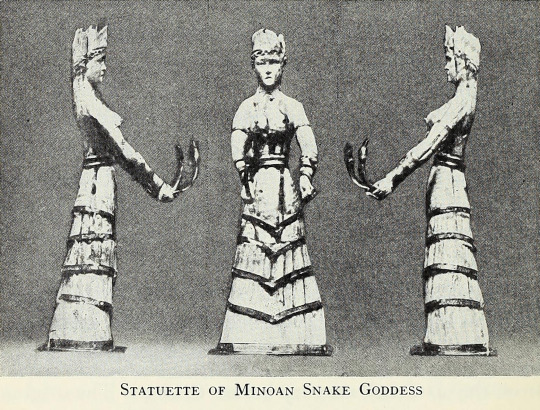
Source details and larger version.
My collection of goddesses of all sorts, of the stars, the moon, the sea, fire, serpents, and so on.
57 notes
·
View notes
Text

✧Nyx, the Watcher of Spirits✧
my starliian goddess was long overdue for her new reference sheet :) Here she is y'all!!
Starliian Species Information
#art#artwork#digital art#fantasy art#starliians#celestial oc#celestial#goddess#naga#snake#snake goddess#open species#void#void god#portfolio
77 notes
·
View notes
Photo

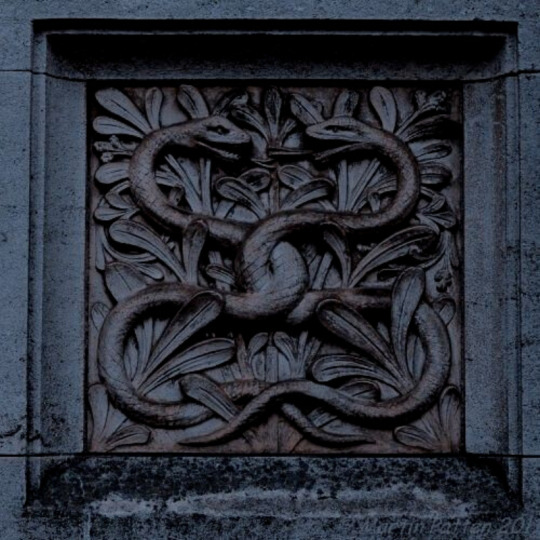


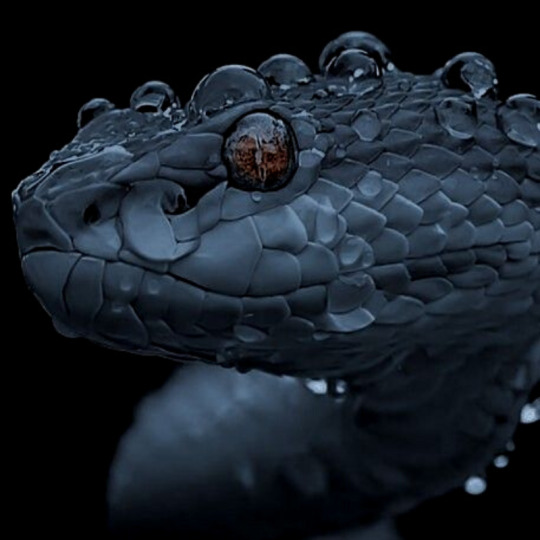


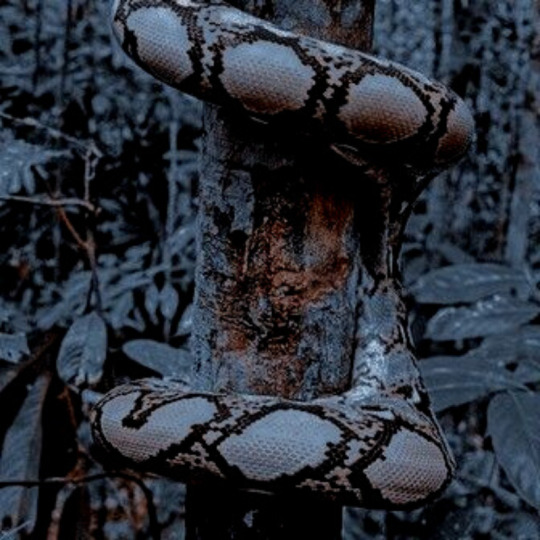
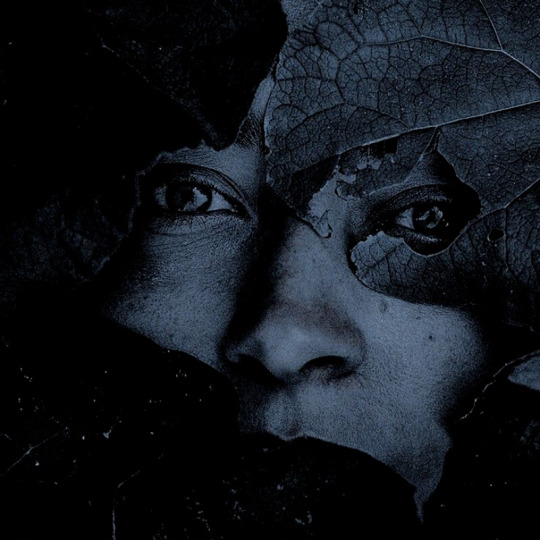
aboriginal (jawoyn) mythology: eingana
eingana, otherwise known as the "dreamtime snake,” is the mother of all water animals and humans. she is a snake goddess of death who lives in the dreamtime.
#aboriginal mythology#jawoyn mythology#eingana#goddesses#snake goddess#aboriginal myth#mythedit#*mine*#requested
279 notes
·
View notes
Text

Snake Girl Sketch - Based on Minoan Snake Priestess.
This one took me two hours to draw, but she really came out beautifully.
#creatuanary#creatuanary2024#fantasy oc#ink drawing#sketchbook#snake hair#snake goddess#medusa#cute Medusa#gorgon#gorgon oc#priestess#snakes#snake art#three eyes#snake girl#kawaii#kawai girl#Medusa oc#snake#Python#minoan#myth oc#greek myth art#greek mythology#dnd oc#pretty#snake people#snake princess#princess
32 notes
·
View notes
Text




i’m gonna try to say this in the most respectful way possible, I NEED YOU MOMMY 😩😩
#she’s so hot omg#lesbian#lesbian thoughts#valorant#valorant viper#mommy viper#she’s real in my eyes idc#snake goddess#how many tags am i gonna add lol#i’m a raging lesbian ok
90 notes
·
View notes
Text
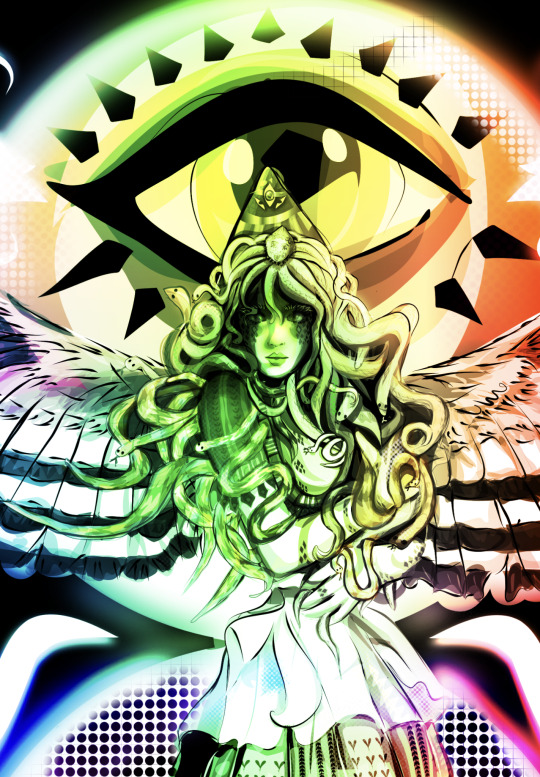
Medusa as a Jester for Greek Carnival of Apokries 🎠🎪🎭🌈.

So here are the design elements I added. The layered dress is based on the clothing of Ancient Minoan Women from Crete (3000-1100 BCE).
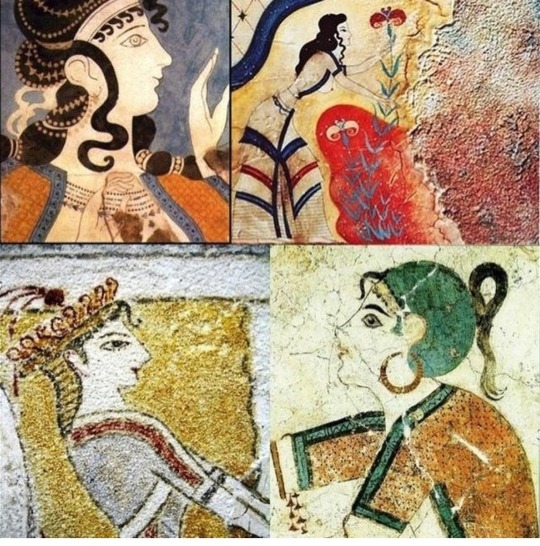

As you can see the skirt were layered with fabric prints, cut at the waist, then totally open at the chest.
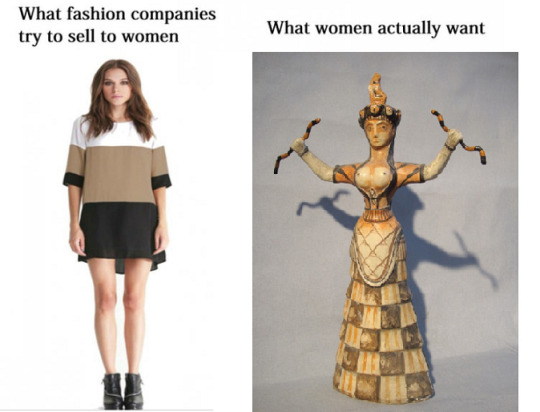
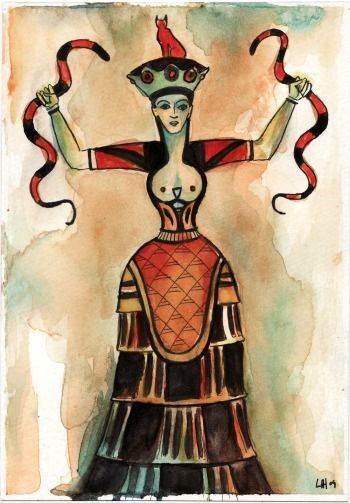
I tried to mimic the design, but gave it a more flowing 'Alice in Wonderland' , Jester look for the Carnival theme.
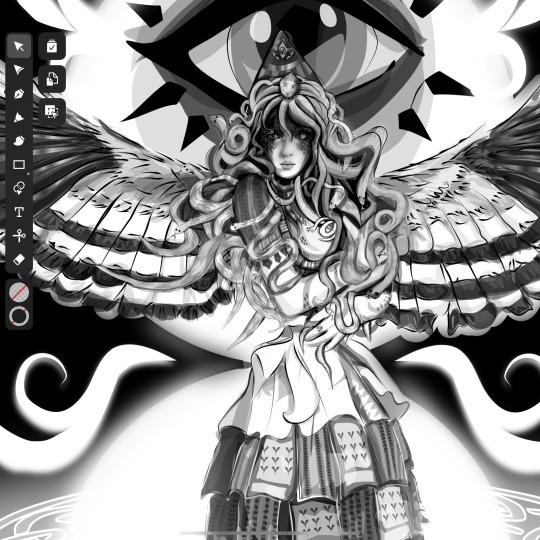
The wings are based on the African/ Greek HooPoe which I felt looked like the original Medusa wing design. Her wings are described as black, white, and gold.
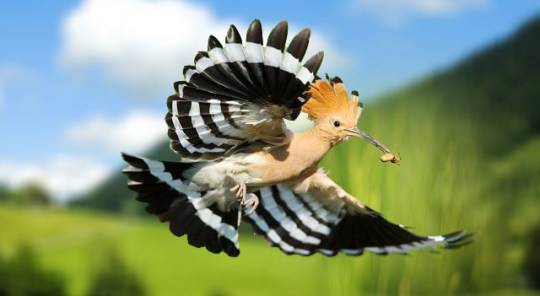
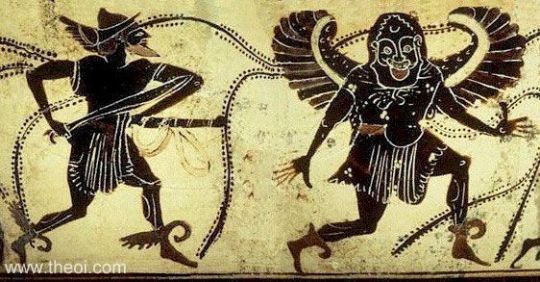
Then I added a Jester look to give her a unique style to go along with her scales. This is in theme with the Greek Carnival of Apokries. This festival dates back to Dionysos, the ancient Greek god of wine, fun and fertility.

That's my art and history rant! Hope you enjoyed! 🐍🎭💕
#medusa#greek mythology#ancient greece#ancient history#mythology#feminism#mythology and folklore#gorgon#goddess#greek gods#harpy#harly quinn#jester#minoan#ancient crete#greek myth art#snake goddess#snake#gorgon oc#character design#oc art#perseus#andromeda#harpies
13 notes
·
View notes
Text
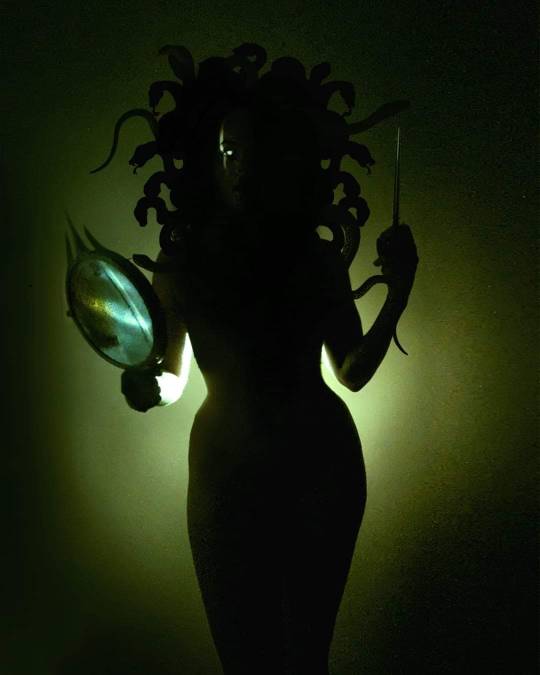
#its always october in my brain#medusa#dark femininity#dark feminine energy#dark feminine aesthetic#horror#horrorcore#horror aesthetic#green#greencore#green aesthetic#snake goddess
18 notes
·
View notes
Text
you got your known Minoans and your unknown Minoans (part four)
(reposted, with edits, from Twitter)
(part one, part two, part three on Tumblr)

Where were we? Oh yeah, bagging on Arthur Evans, right?
(You’re going to want to read Parts 1-3, linked above, if you haven’t already or this won’t make much sense.)
Did I mention in this that even though women appear frequently in other types of Minoan art, no composite ivory statuettes that are both definitely female and definitely genuine have been found? Interesting side note. Like the one thing we know about the Minoans is Snake Goddesses, right? Well, that and Bull Jumpers.
It’s hard to overstate the hold Minoan art still has on the Western imagination.

Image: A copy of a translation of the Odyssey, using the Blue Ladies fresco as cover art. Ironic, given that the culture that produced the Odyssey is probably the one that destroyed the Minoans.
Anyway, the problem is there are a ton of these composite ivory Minoan goddess statues floating around, none of them have reliable provenience, and they're what were used to authenticate each other. See the problem?
Some of them are proven forgeries. So a lot of what is "Minoan-looking" in our minds is forgeries, possible forgeries, and "restorations" done by turn-of-the-century artists.
And as we learn more about them, we find out that a lot of the assumptions were very much dictated by Victorian expectations. Those "corsets" or "jackets" Minoan women are depicted as wearing? Actually shifts with skirts tied around them.
There are a lot of problems with the Boston Goddess. She's too skinny, for one. And if, as some have suggested, her hips and butt are so flat because the ivory is significantly worn away, how are the details of her flounces still visible there? The Boston Goddess (or rather, the fragments of her not used in the restoration), the Seattle Boy-God, and the Ashmolean Boy-God have all been carbon tested. The results were intriguing-- 250ish years old for the Ashmolean figure, and 400-500 for the other two. That's deeply weird. Obviously, the ivory is far too new for them to be genuinely Minoan, but it's awfully old for a Victorian forgery.
But in any case, enough about the artifacts themselves. I want to talk about the conclusions Evans drew from them, which have been repeated as fact in a lot of books and textbooks and journals and magazines since.
The Great Goddess and Her Salesman-Priest
Classical goddesses go in and out of fashion. For most of the Renaissance, all the way to the 1800s, writers mentioned Venus and Diana most often, followed by Minerva/Athena and Juno/Hera. Diana was associated primarily with chastity.
In the Romantic era, Venus was still the most popular goddess (although she was now associated with natural surroundings), and Diana was associated with the moon and animals more than chastity. Proserpina/Persephone and Ceres/Demeter also gained prominence (earth/seasons).
So, the Romantics were very much enamored with the idea of Mother Earth/nature as female (go conquest that land in "virgin" America, yo). The concept wasn't new--lots of cultures personify the earth as female--but this was very much a 19th-century European imagining.
Basically a lot of Victorian dudes liked the idea of their porn involving pretty landscapes.
So, along comes a German dude named Friedrich Wilhelm Eduard Gerhard, because everything you say is credible if you're a white dude with four names, who's like "hey maybe all those Greek goddesses were actually ONE goddess, and she was Mother Earth, that tempestuous temptress."
And like as far as I can tell, that was it. That's the Tweet. He had An Idea about how ancient religion might have worked, and everyone nodded sagely and suddenly it was a theory. The Greeks actually believed in one goddess, with a bunch of different faces.
And then, some of those other dudes nodding along sagely to this theory that didn't arise organically from studying the actual writings and artifacts of the time, but from Mother Earth as a concept being trendy in the 1850s, were like, hey, so we know that the Anatolians and Mesopotamians influenced ancient Greek thought, so if the Greeks worshipped a single goddess, the Anatolians and Mesopotamians must have too!
And then they were like, hey, it was probably also true across Europe! Because there's this <checks notes> Swiss judge named JJ who thinks all of human society was once matriarchal and only later evolved into patriarchy so it seems logical that everyone worshipped a goddess.
For those following along at home, no, this is not how logic works, but these dudes were probably drinking a LOT of absinthe.
Goddess Worship Isn’t Love For Women
Now, one might point out, for example, that the ancient Athenians literally had a goddess as their patron deity and still managed to, arguably, utterly despise women more than anyone else in the world at that time, so clearly goddess worship doesn’t automatically equate to matriarchy, but anyway.
But Jessica! (I can hear you saying, o theoretical reader) You're such a shrieking feminist harpy that you put "howling maenad" in your Twitter bio. Why are you objecting to the idea of widespread ancient matriarchy and female-centered monotheism (or duotheism, since there was also a god)?
Well, here's the thing. It's certainly a cool idea. And it even makes a sort of pop-psychology sense. Back in the Stone Age, maybe men hadn't yet figured out that they were involved in the reproductive process and so deferred to women as life-givers.
But that sort of thinking can lead us to dismiss or ignore real history. Women have always led, women have always fought, women have always ruled, and that shouldn't be manwashed away. But that doesn't mean it was normative. And it matters--both for truthfulness and to fully appreciate what the women who managed to lead actually accomplished--if it wasn't normative. It can also make us miss that matriarchy--*real* matriarchy--isn't necessarily the mirror of patriarchy.
When I was in college, in one of my anthropology classes, we had a textbook that said that there was no such thing as matriarchy, except as a theoretical concept. There was matrilineality, and matrilocality, but not matriarchy.
Was it true? Well, here's the thing: if you define matriarchy as we define patriarchy, but just replace "men" with "women" in the description, arguably it is true that matriarchy doesn't exist. To the best of my knowledge, no one’s found evidence of societies where women treat men like men treat women in patriarchal societies.
But there are, and have been, societies where women own the property, societies in which elder women are the primary leaders/authorities, etc. But they don't attempt to exert control over men in the same way men do over women in a lot of patriarchal societies. So it becomes largely a semantic argument. If it isn't an exact analogue to patriarchy, is it matriarchy? Honestly, I've ceased caring all that much about the terminology, and am more interested in how leadership and authority function in those societies.
But anyway, the Romantics weren't feminists. Just because you like the idea of the feminine as emotional and intuitive and nature-y doesn't mean you give a shit about actual women. And as the Victorian Angel In The House would show us, every pedestal has a cage atop it.
The Romantics might profess to revere Mother Nature, but at the end of the day, they revered her as an object: there to be conquered if they wanted to feel manly, there to challenge them if they wanted to feel manly in a different way, there to soothe and inspire them as Muse, and even there to kill them if they were into the idea of la petite mort being la grand mort.

Image: Just a dude really into being penetrated... with arrows.
And Bachofen, our pal JJ the Swiss judge who also had Theories about anthropology, considered humanity's "Demetrian" matriarchal stage just a necessary transitional period on its way to "Apolline" patriarchy, the pinnacle of human evolution.
They dug up a lot of Venus of Willendorf-like figurines (lots of male-looking and animal ones too, but those didn't fit the theory and got ignored) and decided that they represented a single prehistoric Mother Goddess, source of fertility.
I mean here's the thing: when archaeologists find something and they don't know what it is or what it's used for, a popular default category is "ritual object." If you then start forming theories about how religion worked based on your collection of ritual objects, well, you can imagine how that goes.
So this is the milieu into which Arthur Evans was to release his Minoan discoveries. He writes a lot about the "Great Minoan Goddess" and "the matriarchal stage of society, to which the Minoan religious system owes its origin."
I Regret to Introduce You To Jane Harrison...
So along comes Jane Harrison, who is all into JJ's theory about ancient matriarchy as the fullest collection of "ancient facts"--poof! the theory has become fact--and was also very into the idea that all goddesses are actually a single Great Goddess.
If you don't know anything about Jane Harrison, you might be thinking, "oh, good! at last, a woman weighing in on ancient matriarchy. Perhaps we'll get a take that isn't so... patriarchal.”
Allow me to introduce you to Jane Harrison:
"Matriarchy gave women a false sense of magical prestige. With patriarchy came inevitably the facing of a real fact, the fact of the greater natural weakness of women. Man is the stronger, and when he outgrew his belief in the magical potency of woman, proceeded by a pardonable practical logic to despise and enslave her."
...And All These Other Assholes
Another member of these circles was Sir James George Frazer (only three names there, but also has a "Sir" so probably as credible as the four-name dude). Remember him? The Golden Bough? Yeah.
He looooved the idea of a single Great Mother Goddess and attempted to collect and catalogue world myth and folktales and wanted to trace her and her ever-dying younger consort as a universal or near-universal archetype in human consciousness.
You want Joseph Campbells? This is how you get Joseph Campbells. But Joseph Campbell is a rant for another time.
Carl Jung and Marija Gimbutas, incidentally, thought along similar lines and considered it a universal archetype present in all human psyches, and all cultures.
No writing or art about it from a particular culture? No evidence that it’s actually a thing? *hand wave* Whatever.
Part of what was animating all this thought was confidence that human culture was evolutionary--that there was a relatively smooth line of human progress from a primitive past to an enlightened present to a utopian future.
I mean, the Bronze Age collapse might beg to differ. But what do I know? I'm not a white dude with four names and or a "Sir".
Incidentally, this Victorian confidence that human civilization is smoothly evolutionary appears to be literally killing us right now but let's pretend this is all fun archaeology stuff to mute the silent internal screaming.
Oh Wait, I Forgot To Tell You About The Cat
Anyway. All of these assumptions very much influenced how Evans interpreted what he found, and presented it to the public. Female snake handlers, for example, are actually pretty rare in Minoan art (maybe even all forged), but you wouldn't know that from textbooks about it.
It affected how he arranged the things he found when attempting to recreate altar assemblages.
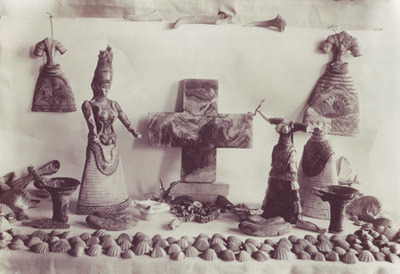
That cross in the assemblage above? They found that and decided that it MUST have religious significance and be the centerpiece of an altar... ...because Christianity, basically.
You know that famous Snake Goddess figurine?
The faience one that isn't a suspected complete fake? You've probably seen her. You can buy earrings of her on Etsy.

That cat on her head?
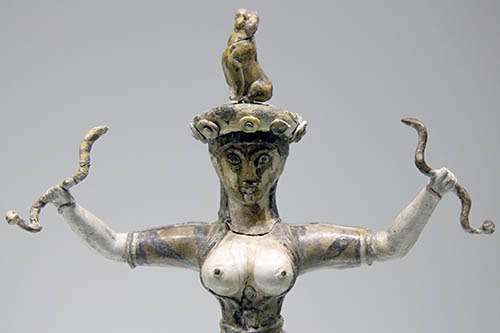
Yeah, it's a random cat that they found elsewhere and decided to stick on her head.
...because the Anatolian and Mesopotamian goddesses they liked to use as proof of a universal singular Great Mother Goddess were often pictured with lions.
So, you know: cat-hat.
About Those Snakes...
So anyway, snake-handling female figures were actually a relatively rare find in Minoan art, but Evans decided she was their central deity, a manifestation of the Great Mother Goddess whose primary attribute was fertility.
But here's the thing: we don't have any writings we can read from the Minoans. All we have is visuals (mostly "restored" by Victorian artists), and we don't *know* what any of their symbolism meant to them. And even a lot of the visuals aren't helpful.
We know that depicting women with bared breasts (not topless, with a garment framing them, which seems very deliberate) was a thing. We don't know what that means. We don't know if this was reflective of *actual clothes that women wore* or whether it's symbolic (like Artemis wearing a crescent moon in her hair). We don't know what breasts meant, in their visual language.
Minoan art doesn't depict children very often, and doesn't depict nursing mothers at all (unlike Egyptian or mainland Greek art). So do breasts represent fertility in their visual vocabulary? No idea.
Are bared breasts considered erotic? Again, no idea. That assumption was strongly tied to the snakes, which are tied to Christian associations of snakes with sexuality--specifically sexual sin. If the bared-breasts women were actually even originally depicted with snakes.
Ultimately, we don't even know if the statue of a snake-handling woman represents a goddess, a priestess, or a woman representing or symbolizing something else entirely. Frankly, we don't even know what her face actually looked like.
Despite various authors rhapsodizing about the "sternness of her expression" and whatever else, the entire face of this famous statue, and her snakes, were fashioned by Halvor Bagge, a restorer/artist. She might have been holding sheaves of grain, for instance. She might have been smiling gently. She might have looked afraid. We don't know.
We know very little.
Who Better To Say What We Want than Those Who Can’t Speak?
Because the Minoans didn't leave behind any writing we can read, and most of the art we have from them had to be heavily restored by Victorian artists, they provided a perfect blank slate for Victorian men desperate to prove European superiority to project onto.
Now. Archaeologists *aren't* just people who dig up old stuff. Interpreting the past is something we have to do if we want to try to understand it. And there's nothing wrong with putting forth theories. But it becomes a problem when it's not made clear that these are theories, when theories are built upon theories upon theories upon theories, with no clear substantiation for any of it. Theory slides into "fact" very easily.
And it can very easily become circular. Evans used theories about other cultures worshipping a single Great Goddess to guide what he looked for on Crete and how to present what he found, which has looped around to Crete being the center of Great Goddess worship and being used to substantiate the idea of singular Great Goddess worship in some of the same cultures whose practices were used to suggest that Crete might be like they were. Much like ivory statuettes with no provenience were used to substantiate others.
And all of that is then used as evidence of How Human Culture Works. So suddenly The Center Of Ancient Mediterranean Worship is safely in Europe.
When, as far as what can actually be verified, what doesn't come out of the airy, tempestuous realms of Romantic theory, is almost nothing.
We still don't know the Minoans.
Fin.
#archaeology#arthur evans#crete#white supremacist archaeology#snake goddess#art forgery#minoan art#matriarchy#goddess worship#the great goddess#romanticism#minoan#minoans
97 notes
·
View notes
Text
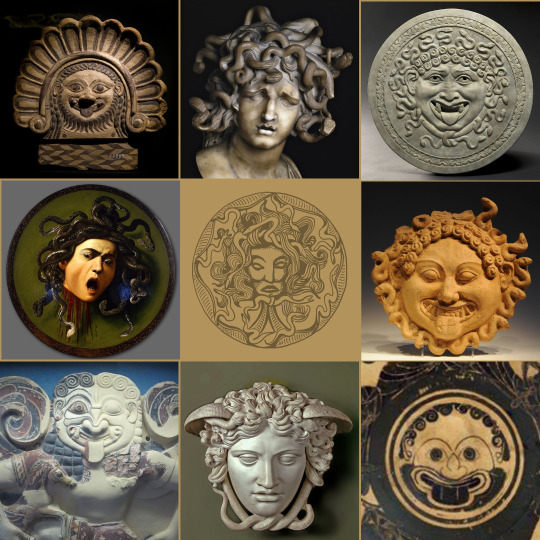
At the origin of the Myth of Medusa there is probably the ancient apotropaic symbol of the gorgoneion, the head of the gorgon.
Gorgoneion is a grinning mask with glaring eyes and protruding beast-like tusks and pendent tongue used in antiquity to banish evil spirits from temples. The origin of the symbol is probably a cultus object, a ritual mask used as the vehicle of the divine power. The big wide-open eyes were used in the past to recall the idea of the divine eye always watching. Gorgoneion was in fact seen as an underworld bogey. The figure is depicted in the typical fashion of the Mistress of Wild Things, the dark side of the Great Mother. She is the snake goddess, the snakes in her hair represent the chthonian symbol of rebirth and sexuality while the wings symbolize the divine power and transformation. These powerful symbols were used since antiquity to depict the ancestral divine feminine control over life and death. The apotropaic power of the gorgoneion comes from the representation of the divine energy always watching and scaring away with its monstrous figure.
The rise of patriarchal society and the subsequential change from a divine feminine power to a divine male power brings the necessity of demonizing the ancestral powers and iconographies. The figure of the gorgon endures a change from the goddess of snakes to a monstrous creature defeated by the male hero Perseus. The myth of medusa tells us the story of a woman punished for her beauty, for her feminine power, and transformed into a monstrous creature by a goddess. The gorgon’s name in the myth is Medusa, which in ancient Greek means Protectress or Guardian and she is transformed in a winged creature with serpents’ hair and the power of petrify people with her gaze. For patriarchal society this supernatural creature must be defeated and subjugated to male power, and for this reason in the myth Perseus, after killing her, will use her head as a powerful defensive weapon on his own shield.
With the myth of Medusa, the highest divinity of ancient religion became a harmful bogey to be slayed to represent the female oppression. Patriarchal society used the female figure of Athena to legitimize female oppression and retells the apotropaic gorgoneion symbol as a male hero trophy only indirectly connected with the female power of a goddess.
#witchcraft#witchblr#italianwitch#strega#paganism#witches of tumblr#pagan witch#gorgoneion#medusa#medusa gorgon#ancient symbols#symbols#sacred symbols#great goddess#occultism#esoteric#ancient religions#snake goddess#gorgon#serpent
24 notes
·
View notes
Text

Serpensis
A cruel queen who was cursed. For her transgressions, she was turned into the embodiment of cunning - a snake goddess.
#eldarya#beemoov#eldarya outfit#eldarya poland#eldarya clothes#snake goddess#snake#eldaryenne#eldarya gardienne#gardienne#eldarya oc
12 notes
·
View notes
Text



For #WorldSerpentDay: Manasa, the Hindu snake goddess, trio of late 19th/early 20th c. Indian images:
1. Manasa, The Snake Goddess
c. 1890, Kalighat
watercolor, graphite, ink, and tin on paper
Cleveland Museum of Art
2. "Manasa, goddess presiding over snakes."
c.1895, Calcutta (Kolkata)
color lithograph/popular print
British Museum
3. Manasa, The Snake Goddess
c. 1920, West Bengal
by Jamini Roy (Indian, 1887–1972)
watercolor painting, gouache on paper
San Diego Museum of Art
#snake#snakes#serpent#serpents#snake goddess#serpent goddess#reptiles#19th century#20th century#1890s#1920s#Indian art#South Asian art#Hindu art#print#lithograph#painting#watercolor#works on paper#Cleveland Museum of Art#British Museum#San Diego Museum of Art#World Serpent Day#animals in art
20 notes
·
View notes
Text

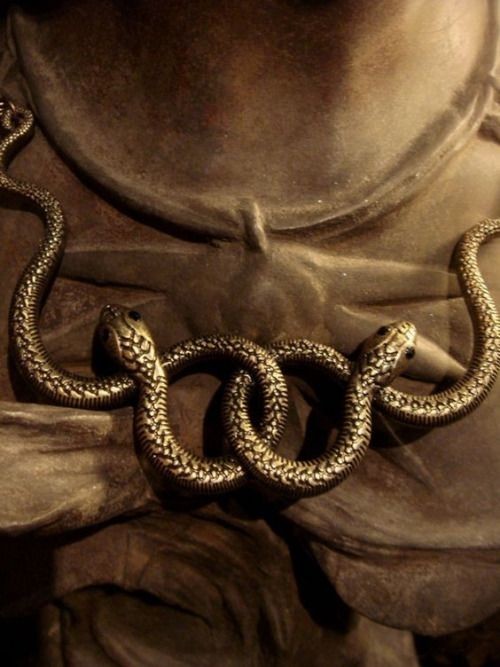


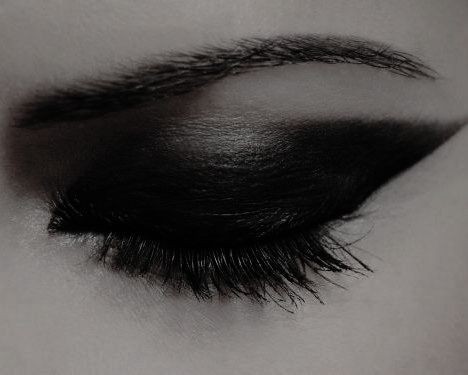

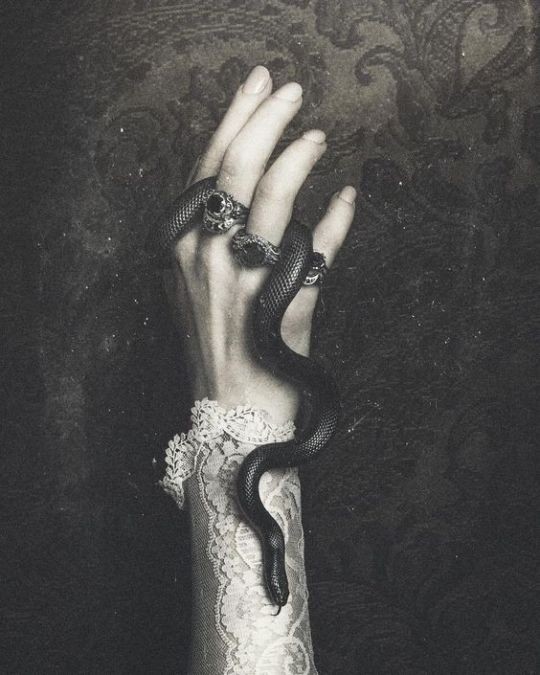

"Giltiné is a snake goddess of death. She roams cemeteries at night, licking coffins and corpses, collecting the poison of the dead, which she will then use on the living whenever their destined time comes. Unlike so many Angels of Death who only appear after someone has died to serve as escorts to the next realm, Giltiné actually pulls the plug: she terminates life."
"Giltiné can be delayed (a popular folklore theme), but ultimately she cannot be stopped. She magically opens all doors or locks. She cannot be prevented from entering or from performing her killing function, if it’s genuinely someone’s time to go. Giltiné usually takes her place at the head of the sickbed."
#history#Snake goddess#snake goddess#Lithuan mythology#Mythology#Giltine#Giltiné#Goddess giltiné#Goddess of death#goddess of death
14 notes
·
View notes
Photo

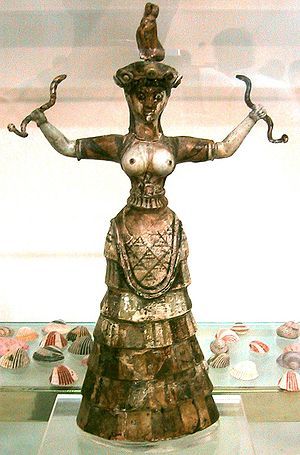
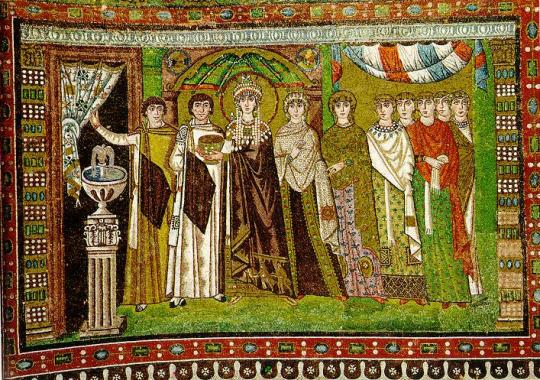


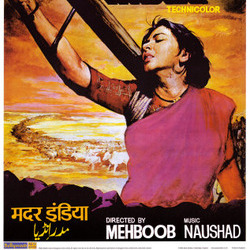



mother
1 'artist' unknown Venus of Willendorf (c28000-25000BCE) limestone http://smarthistory.khanacademy.org/nude-woman-venus-of-willendorf.html
2 artist unknown snake goddess, Minoan Civilization, Crete (c1600 BCE)
3 artists unknown Empress Theodora, mosaic in church of San Vitale, Ravenna, Italy (6th Century) http://smarthistory.khanacademy.org/byzantine-justinian.html
4 Ana Mendieta (1948-85) Cuba/ USA Silueta search at http://www.moca.org
5 Piero della Francesca (1415-92) Madonna of Mercy, detail (c1460) oil and tempera on panel
6 poster from Mehboob Khan's 1957 film Mother India http://www.youtube.com/watch?v=yNFPjvT5PJM http://www.youtube.com/watch?v=JzJHnADcpa8
7 Cindy Sherman Untitled (1989)
8 Maïmouna Patrizia Guerresi () As a photographer, sculptor, and installation artist, ‘Maïmouna’ Patrizia Guerresi reveals unique and authentic sensibilities in her narration of the beauty and subtleties of racial diversity and multiculturalism. Over an established career, she has developed her own symbolism, which combines cosmological and ancestral traditions belonging to various European, African, and Asian cultures. Her personal commitment to Baifall Sufism has led her to produce an aesthetic that is able to bridge time, space and civilisations, as well as figuration and abstraction.
The human body is seen as the nucleus and temple of the soul, a place that houses a delicate, higher awareness; the very conduit for encompassing natural and cosmic forces. More about mysticism than any singular religion, her work is visionary in that it restores those elusive qualities of sacredness and unity in our frequently dehumanising and fragmented contemporary visual world. Her classic iconographic style explores the universality of human experience and reclaims the often hidden nurturing powers of feminine energy. Presented as a kind of free flowing epic, the viewer is left to read the significance of her imagery and quietly meditate on its potential to personally engage with its audience. As if her figures were speaking directly to each one of us.
From her earliest experiments with the physicality and archetypal imprinting of the psyche, through to her latest, evermore metaphoric ‘inner constellations’, Maïmouna insists on a cross-cultural discourse and an expansion of the boundaries that normally dictate our individual attitudes. She invites us to see further and to look deeper – past skin colour, preconceptions, and ethnic landscapes – into the wider paradigm of inclusion. She leads us through apparently simple notions of dimensionality into the exquisite, mystical and fragile complexities of life from within. Rosa Maria Falvo,writer and curator, www.chobimela.org
Perspective on the relationship between women and society, with particular reference to those countries in which the role of women is most marginalized. For over twenty years Guerresi’s work has been about empowering women and bringing together individuals and cultures in an appreciation for a context of shared humanity, beyond borders – psychological, cultural, and political. She uses recurrent metaphors such as milk, light, the hijab, trees, and contrasting white on black to create awareness of the vital unifying qualities of the feminine archetype and its special healing potential. Guerresi’s art is uniquely authentic. Her work is inspired by personal experience and cultural contexts that reference universal myths, the sacred realm, and the female condition, all of which are seen as vital expressions of the human form: an essentially spiritual and mystic body. Through photographs and videos of silent, austere, veiled women in domestic scenes and individual poses, her work functions as both metaphor and provocation. Guerresi’s images are delicate narratives with fluid sequencing, as well as rational analyses: women dressed in white, enveloped in chadors, fixed within their own tradition and isolated from and by it in the contemporary world. Her Fatimah image suggests the woman as Mother- Earth supporting us in the original energy cycle of Space-Universe-Infinity. www.maimounaguerresi.com
9 The Cholmondeley Ladies (c1600-10) oil paint on wood 886 x 1723 mm British School 17th century (1600‑1699)
search @ www.tate.org.uk
#mother#earth#venus#figure#figurative#symbolism#representation#mendieta#minoan#mary#della francesca#willendorf#sherman#Guerresi#spiritual#mother india#cholmondeley#snake goddess
7 notes
·
View notes
Text
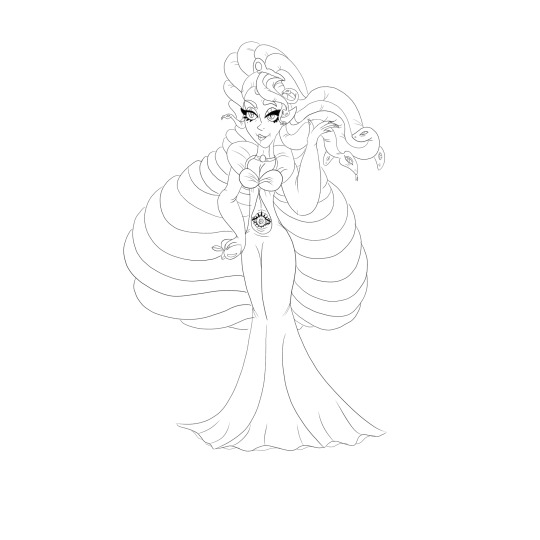
3 notes
·
View notes